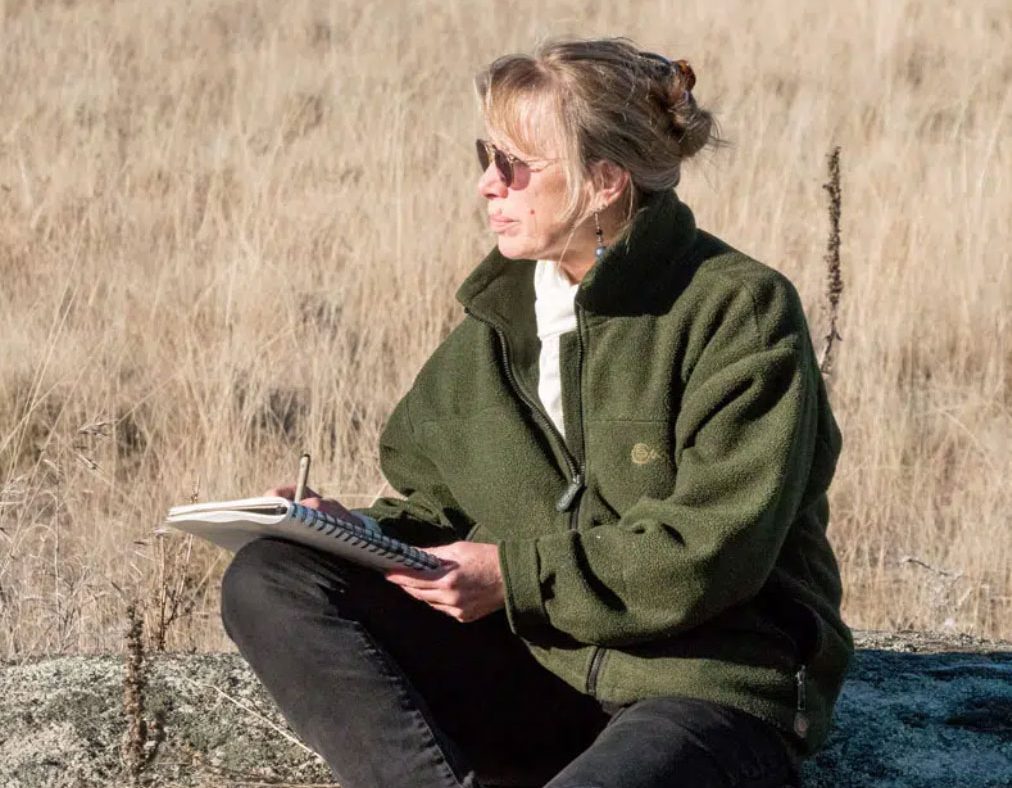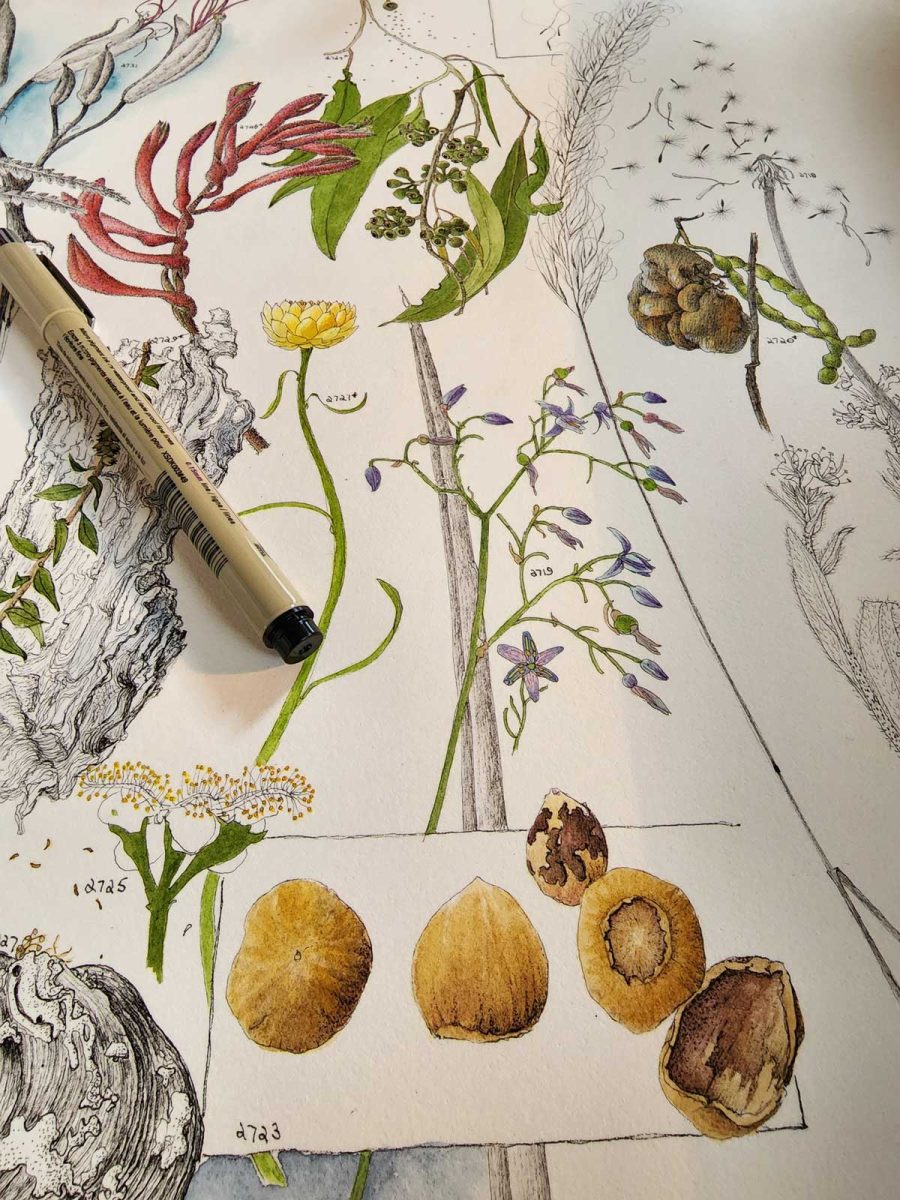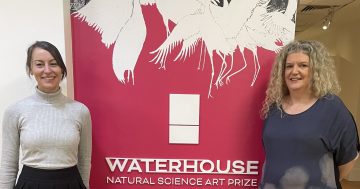
Local artist Sharon Field has pledged to do a drawing a day for 3000 days. Photo: Sharon Field.
When local botanical artist Sharon Field is not creating in her studio, she’s out in nature gathering inspiration for a work she hopes will bridge the gap between art and the frightening scientific realities of climate change.
Being a botanical artist, its impacts on flora and fauna have always concerned her, but a UN report released at the end of 2021 brought a lightbulb moment.
“It said we as a planet had to limit global temperature increases to no more than 1.5 degrees by 2030. At that time, 2030 was about 3000 days away so I decided – probably in a foolhardy moment – to do a drawing a day for 3000 days,” she says.
The artist is currently about 650 drawings down with about 2350 to go in the 3000 Days project – but already, what started as a personal peaceful protest has taken on a whole new significance beyond anything she had anticipated.
Mostly, it calls into question what she says is a somewhat passive world response to what scientists say is an existential crisis.
“I think most people realise climate change is happening and that it’s a problem – but why isn’t the reaction along the lines of what we saw during COVID? When the pandemic hit, governments, scientists and industry got together worldwide to solve the problem,” she says.
“Now we have a problem. We know the science, we have the technology to help, governments understand what needs to be done – so why are we dragging the chain? And why aren’t people getting hot under the collar about it?
“I think people like you, me, our neighbours, our friends, we’re human, and we tend to live in the here and now. Our big issues are COVID, rising interest rates, the cost of living, trying to get kids to school on time each day. And the way that information comes out about climate change is at a very high level.
“If I were to say 418 parts per million of carbon dioxide in the atmosphere – nobody knows what that means. But they look at the scroll and they do recognise the flower their grandma used to grow in her backyard or the insect they saw on a neighbourhood stroll that so fascinated their toddler. And they can understand that it’s all part of a rich web of life called biodiversity, all of which is under grave threat.”

The drawings are done directly in ink – no pencil, and no room for error (that can’t be covered up). Photo: Sharon Field.
Sharon estimates that upon its completion, the scroll of painstakingly detailed drawings of plants, insects, animals or parts of flora and fauna of animals, drawn on heavy-duty watercolour paper, will stretch about 70 metres – longer than the famous Bayeux Tapestry.
Some subjects are from her travels, but many are local Australian flora and fauna specimens. Nothing is planned and everything is drawn directly in pen – a “leap of faith” as she calls it.
She likes to select her subjects while exploring biodiverse areas, like Ginninderry’s conservation corridor, where she has documented numerous grasses, wattles, Eucalyptus trees, and insects.
“There are more introduced species in Australia now than native plants, which is a sad indictment on this country,” she says.
“There was something like 20,000 hectares of native temperate grassland when the ACT was in its infancy. Only 5 per cent of that is left. That has a devastating effect on our biodiversity.
“Developments like Ginninderry are an important piece of the puzzle. We need developers to try hard to do the right thing and prioritise preserving biodiversity.”
Ginninderry is the biggest supporter of the 3000 Days project in Australia, but the scroll has garnered massive interest overseas, particularly in the United States, and has exhibited in its early stages in Vienna and Romania.
Sharon is unsure where – or how – the scroll will first be exhibited upon completion.
“At this stage, I can’t even imagine the finish line. But a journey of a thousand miles starts as a single step,” she says.
“That is the philosophy I apply to the scroll – a drawing a day. But also each individual drawing, I look at it and break it down into its component parts. Then I start.
“When you think about it, the same approach is required to tackle climate change. Or anything, really. Decide what needs to be done, then start.”














